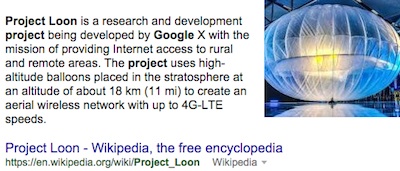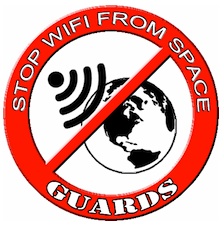 Workers at a Sri Lanka tea plantation on Feb. 17 found wreckage of a Google “Project Loon” Wi-Fi high-altitude balloon. It was the maiden flight of the controversial project that would bring Wi-Fi to remote areas.
Workers at a Sri Lanka tea plantation on Feb. 17 found wreckage of a Google “Project Loon” Wi-Fi high-altitude balloon. It was the maiden flight of the controversial project that would bring Wi-Fi to remote areas.
Global Union Against Radiation Deployment from Space has said the program could lead to “environmental devastation and even widespread starvation.”
Blanketing the earth with “harmful pulsed microwave radiation will destroy ozone and worsen climate change due to the emission of black soot from so many rockets,” it says.
 “Combined with the detrimental effects radio frequency radiation has on both flora and fauna, including bees, these global wireless projects are predicted to lead to environmental devastation and even widespread starvation.”
“Combined with the detrimental effects radio frequency radiation has on both flora and fauna, including bees, these global wireless projects are predicted to lead to environmental devastation and even widespread starvation.”
Project Loon would be a network of balloons traveling at the edge of space that would connect rural and remote areas to the internet.
Government Says Balloon “Landed Safely”
Workers found the deflated balloon with its electronic equipment in the island’s tea-growing region in Grampola.
The Sri Lanka Information and Communications Technology Agency said the balloon “landed safely under standard operating procedures as part of the test.”
The balloon, one of three in the test, entered Sri Lanka air space Feb. 14 after having been launched from South America. The balloons will travel twice as high as commercial airliners (11 miles) and will be propelled by winds and directed from the ground. Lifespan is about 180 days.
Sri Lanka is taking a 25% stake in the joint venture with Google in exchange for allocating spectrum for the project.
GUARDS says the “harmful pulsed microwave radiation” violates human rights conventions due to the “serious biological effects and involuntary nature of the exposure.”
The plan of Google and others to blanket New York City with 7,500 Wi-Fi terminals that would replace pay phone pedestals has brought many of the same criticisms.


 Laura Anderson, who rose to VP/GM of global communications and events in a nearly 20 year stint at Intel, will take on the Americas technology chair at Burson following the completion of the BCW and H+K merger on July 1.
Laura Anderson, who rose to VP/GM of global communications and events in a nearly 20 year stint at Intel, will take on the Americas technology chair at Burson following the completion of the BCW and H+K merger on July 1. WE Communications has partnered with ROKK Solutions to form the WE ROKK AI service.
WE Communications has partnered with ROKK Solutions to form the WE ROKK AI service. In the dynamic world of modern business, effective communication is a pivotal tool for success across various industries. At Communications Strategy Group (CSG®), our expertise in embracing innovation in communication extends beyond traditional marketing strategies, paving the way for transformative industry-specific solutions.
In the dynamic world of modern business, effective communication is a pivotal tool for success across various industries. At Communications Strategy Group (CSG®), our expertise in embracing innovation in communication extends beyond traditional marketing strategies, paving the way for transformative industry-specific solutions. There are two types of tech PR professionals. Which one are you? And are C-suite executives making that decision for you?
There are two types of tech PR professionals. Which one are you? And are C-suite executives making that decision for you? While there’s an impulse to grab reporters’ attention with the newest industry-transforming tech product or service, a back-to-basics approach focused on telling the right stories to the right people is a far more successful way to ensure your technology campaign breaks through the clutter of today’s crowded tech landscape.
While there’s an impulse to grab reporters’ attention with the newest industry-transforming tech product or service, a back-to-basics approach focused on telling the right stories to the right people is a far more successful way to ensure your technology campaign breaks through the clutter of today’s crowded tech landscape.


 Have a comment? Send it to
Have a comment? Send it to 
No comments have been submitted for this story yet.